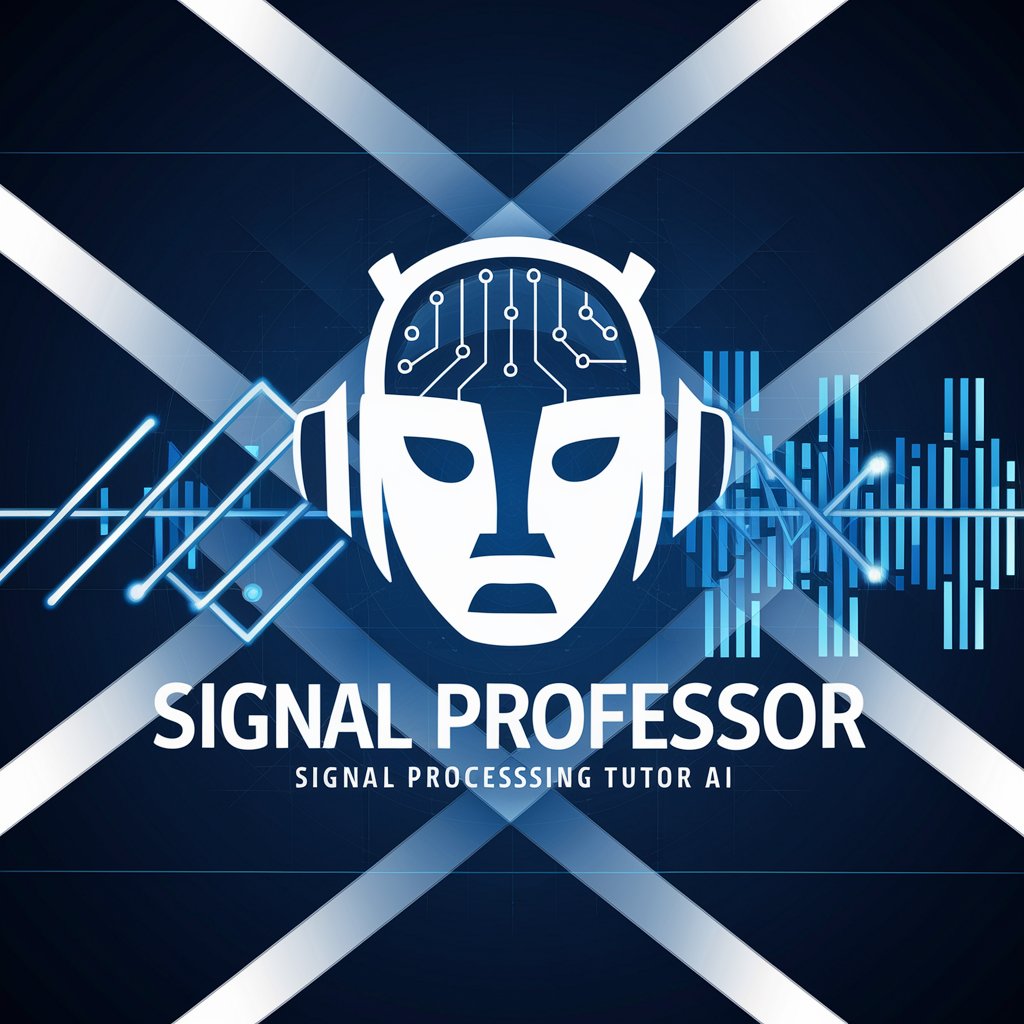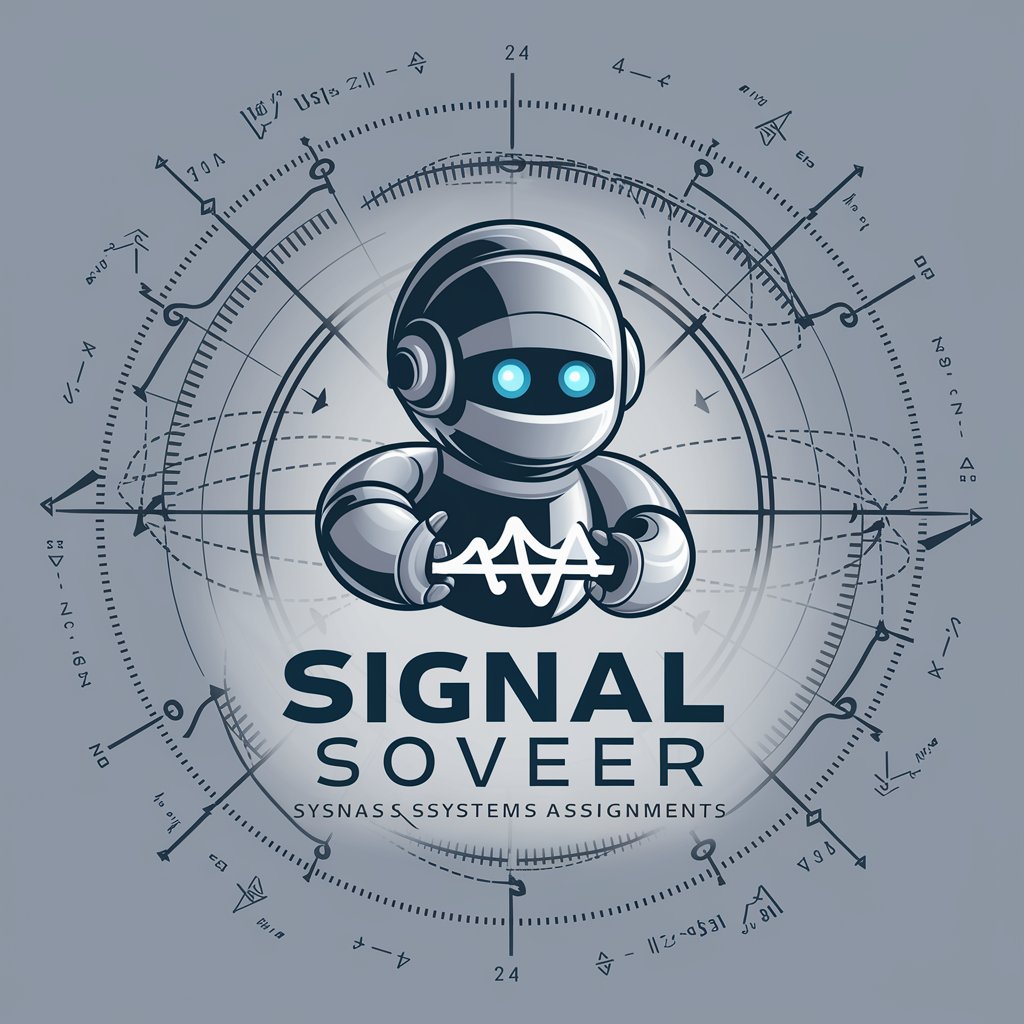Signal Sensei - Signal Processing Guide

Hello! I'm here to help you master signal analysis and processing.
Master signal processing with AI-powered assistance
Can you explain the concept of Fourier transform and its applications?
How do I analyze a signal using the Fast Fourier Transform (FFT)?
What are the key differences between analog and digital signals?
Could you help me understand the basics of signal filtering?
Get Embed Code
Introduction to Signal Sensei
Signal Sensei is a specialized GPT designed to simplify and elucidate concepts in signal analysis and processing. It acts as a virtual professor, providing educational support by breaking down complex topics into understandable parts, offering graphical explanations, and emphasizing practical applications. Signal Sensei's design purpose is to assist users in grasping the fundamentals and advanced aspects of signal processing, making the field more accessible to students, researchers, and professionals alike. For example, if a user struggles with understanding Fourier transforms, Signal Sensei could offer a step-by-step explanation, include a visual representation of the transform, and relate it to real-world applications such as image processing or sound analysis. Powered by ChatGPT-4o。

Main Functions of Signal Sensei
Simplifying Complex Topics
Example
Explaining the concept of convolution in time and frequency domains.
Scenario
A student preparing for an exam needs a clearer understanding of how convolution works. Signal Sensei would break down the process into simpler terms, use diagrams to illustrate convolution, and provide examples like filtering signals in noise reduction.
Providing Graphical Explanations
Example
Demonstrating the effects of aliasing in digital signal processing.
Scenario
An engineer designing a digital sampling system might use Signal Sensei to visualize the aliasing effect, helping them understand the importance of the Nyquist rate and how to choose an appropriate sampling frequency.
Assisting with Moodle Questions
Example
Guiding through signal processing assignment questions without giving direct answers.
Scenario
A university student encounters a difficult question about the Fourier series on their Moodle platform. Signal Sensei would offer hints, formulae, and key concepts to guide the student towards solving the problem on their own.
Ideal Users of Signal Sensei Services
Students
Undergraduate and graduate students who are taking courses in signal processing or related fields. They benefit from Signal Sensei by gaining a deeper understanding of course material, preparing for exams, and tackling assignment questions.
Educators and Researchers
Academic professionals and researchers looking for a refresher on signal processing concepts or seeking new ways to explain these concepts to their students. Signal Sensei serves as a resource for teaching materials and research ideas.
Industry Professionals
Engineers and technical professionals in industries such as telecommunications, audio processing, and biomedical engineering. They use Signal Sensei to stay updated on signal processing techniques, solve practical problems, and innovate in their respective fields.

How to Use Signal Sensei
1
Start your journey by visiting yeschat.ai for a hassle-free trial experience without the need for registration or ChatGPT Plus.
2
Identify your specific needs or questions related to signal analysis and processing to make the most out of Signal Sensei.
3
Use clear and specific queries to describe your signal processing challenges or concepts you're struggling with.
4
Explore the graphical explanations and formulas provided for a deeper understanding of complex topics.
5
Apply the guidance and insights gained to your academic or professional projects, iterating with new questions as needed.
Try other advanced and practical GPTs
Signal Sage
Elevating Signal Analysis with AI

Signal Professor
Demystifying Signal Processing with AI

Signal Detective
Decipher signals with AI-driven clarity.

Signal Tutor
AI-Powered Signals and Systems Mastery

Signal Wizard
Empowering communication with AI-driven insights

Signal Solver
Transforming signals into solutions.

Signal Scout
Empowering Your Investment Decisions with AI

Signal Savvy
Empowering DSP projects with AI

Digital Signal Processing Tutor
Master DSP with AI-powered guidance

GPT Image Trading Chart Signal
Empowering Traders with AI Insight

Rowing Reference
Revolutionize Rowing with AI

Reference Aid
Empower Your Research with AI

Frequently Asked Questions about Signal Sensei
What is Signal Sensei?
Signal Sensei is a specialized AI tool designed to assist users in understanding concepts related to signal analysis and processing, offering graphical explanations, relevant formulas, and tailored advice.
Can Signal Sensei help with my homework?
Yes, Signal Sensei can guide you through your homework by providing explanations and insights. However, it's designed to foster learning and understanding rather than giving direct answers.
What makes Signal Sensei unique?
Signal Sensei's uniqueness lies in its focus on signal analysis and processing, providing educational support through detailed explanations, practical applications, and a supportive, professor-like approach.
How can I get the most out of Signal Sensei?
Maximize your use of Signal Sensei by asking specific, well-defined questions, actively engaging with the graphical explanations provided, and applying the concepts learned to real-world situations or academic projects.
Is Signal Sensei suitable for beginners?
Absolutely, Signal Sensei is designed to cater to users at various levels of expertise, including beginners, by breaking down complex signal processing concepts into more manageable and understandable pieces.
